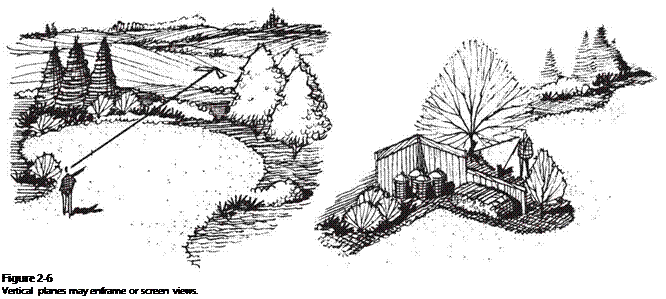Vertical planes are established by such site elements as the facades of a house, walls, fences, the foliage mass of trees and shrubs, tree trunks spaced close together, and/or steeply sloped ground. The vertical planes’ most prominent role in the landscape is one of enclosure (Figure 2—4). Vertical planes define the surrounding edges of a space and separate one space from another. Similarly, vertical planes directly affect views.

They control how much or how little is seen from any one place in the landscape and thus influence the degree of privacy that is felt in an outdoor space. An outdoor room may be rather open with views extending outward in many directions, partially enclosed on several sides, or totally enclosed with an inward orientation (Figure 2—5). Vertical planes may be used to direct and enframe views to desirable places or screen

views from unattractive features (Figure 2—6). In addition, the character of vertical planes influences the feeling of the space. Vertical planes may vary from rough to smooth, light to dark, solid to transparent, and so on. Each of these variables influences the mood of a space.



